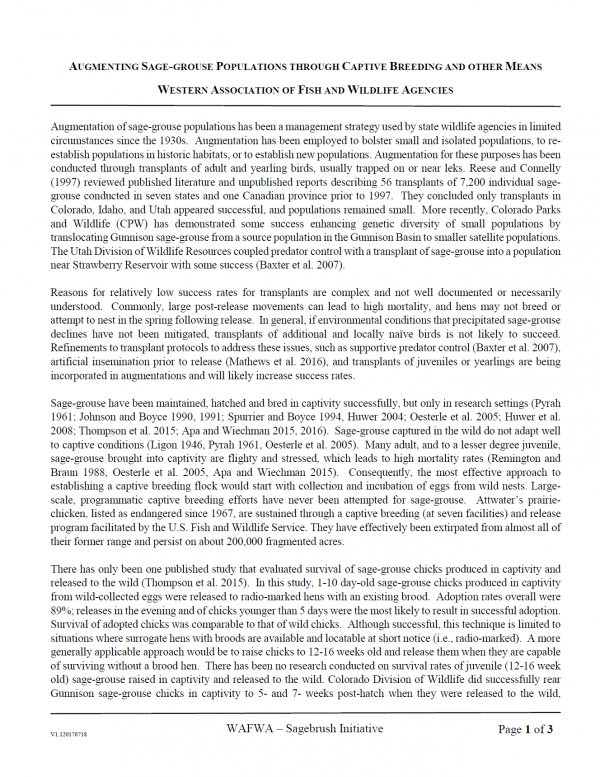Augmentation of sage-grouse populations has been a management strategy used by state wildlife agencies in limited circumstances since the 1930s. Augmentation has been employed to bolster small and isolated populations, to re-establish populations in historic habitats, or to establish new populations. Augmentation for these purposes has been conducted through transplants of adult and yearling birds, usually trapped on or near leks. Reese and Connelly (1997) reviewed published literature and unpublished reports describing 56 transplants of 7,200 individual sage-grouse conducted in seven states and one Canadian province prior to 1997. They concluded only transplants in Colorado, Idaho, and Utah appeared successful, and populations remained small. More recently, Colorado Parks and Wildlife (CPW) has demonstrated some success enhancing genetic diversity of small populations by translocating Gunnison sage-grouse from a source population in the Gunnison Basin to smaller satellite populations. The Utah Division of Wildlife Resources coupled predator control with a transplant of sage-grouse into a population near Strawberry Reservoir with some success (Baxter et al. 2007).
Attached Files
| File | Action |
|---|---|
| Captive Breeding White Paper WAFWA V1.1.pdf | Download |
- Version
- File Type pdf
- File Size 106.40 KB
- Publication Date July 17, 2017
- Download Count (since 10/2020) [1479]
